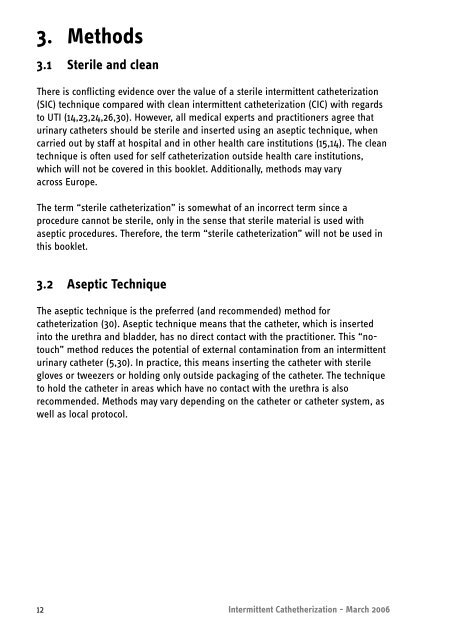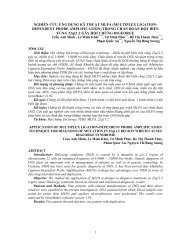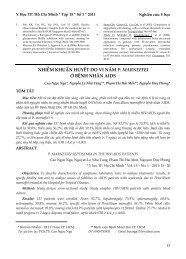1. Intermittent catheterization - European Association of Urology
1. Intermittent catheterization - European Association of Urology
1. Intermittent catheterization - European Association of Urology
Create successful ePaper yourself
Turn your PDF publications into a flip-book with our unique Google optimized e-Paper software.
3. Methods<br />
3.1 Sterile and clean<br />
There is conflicting evidence over the value <strong>of</strong> a sterile intermittent <strong>catheterization</strong><br />
(SIC) technique compared with clean intermittent <strong>catheterization</strong> (CIC) with regards<br />
to UTI (14,23,24,26,30). However, all medical experts and practitioners agree that<br />
urinary catheters should be sterile and inserted using an aseptic technique, when<br />
carried out by staff at hospital and in other health care institutions (15,14). The clean<br />
technique is <strong>of</strong>ten used for self <strong>catheterization</strong> outside health care institutions,<br />
which will not be covered in this booklet. Additionally, methods may vary<br />
across Europe.<br />
The term “sterile <strong>catheterization</strong>” is somewhat <strong>of</strong> an incorrect term since a<br />
procedure cannot be sterile, only in the sense that sterile material is used with<br />
aseptic procedures. Therefore, the term “sterile <strong>catheterization</strong>” will not be used in<br />
this booklet.<br />
3.2 Aseptic Technique<br />
The aseptic technique is the preferred (and recommended) method for<br />
<strong>catheterization</strong> (30). Aseptic technique means that the catheter, which is inserted<br />
into the urethra and bladder, has no direct contact with the practitioner. This “notouch”<br />
method reduces the potential <strong>of</strong> external contamination from an intermittent<br />
urinary catheter (5,30). In practice, this means inserting the catheter with sterile<br />
gloves or tweezers or holding only outside packaging <strong>of</strong> the catheter. The technique<br />
to hold the catheter in areas which have no contact with the urethra is also<br />
recommended. Methods may vary depending on the catheter or catheter system, as<br />
well as local protocol.<br />
12 <strong>Intermittent</strong> Cathetherization - March 2006

















